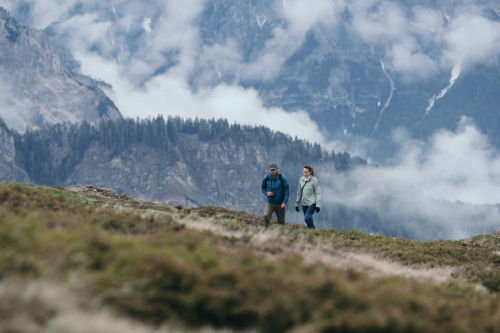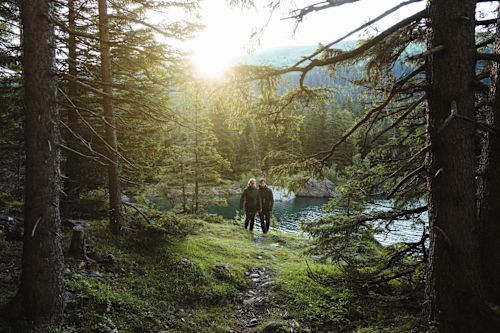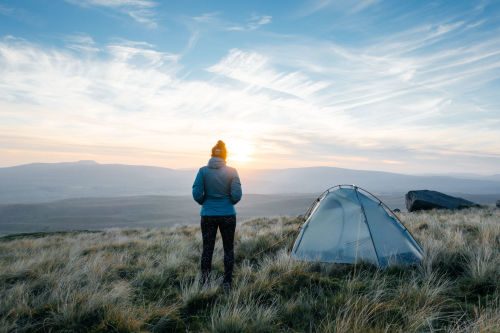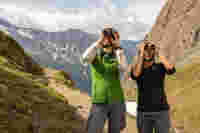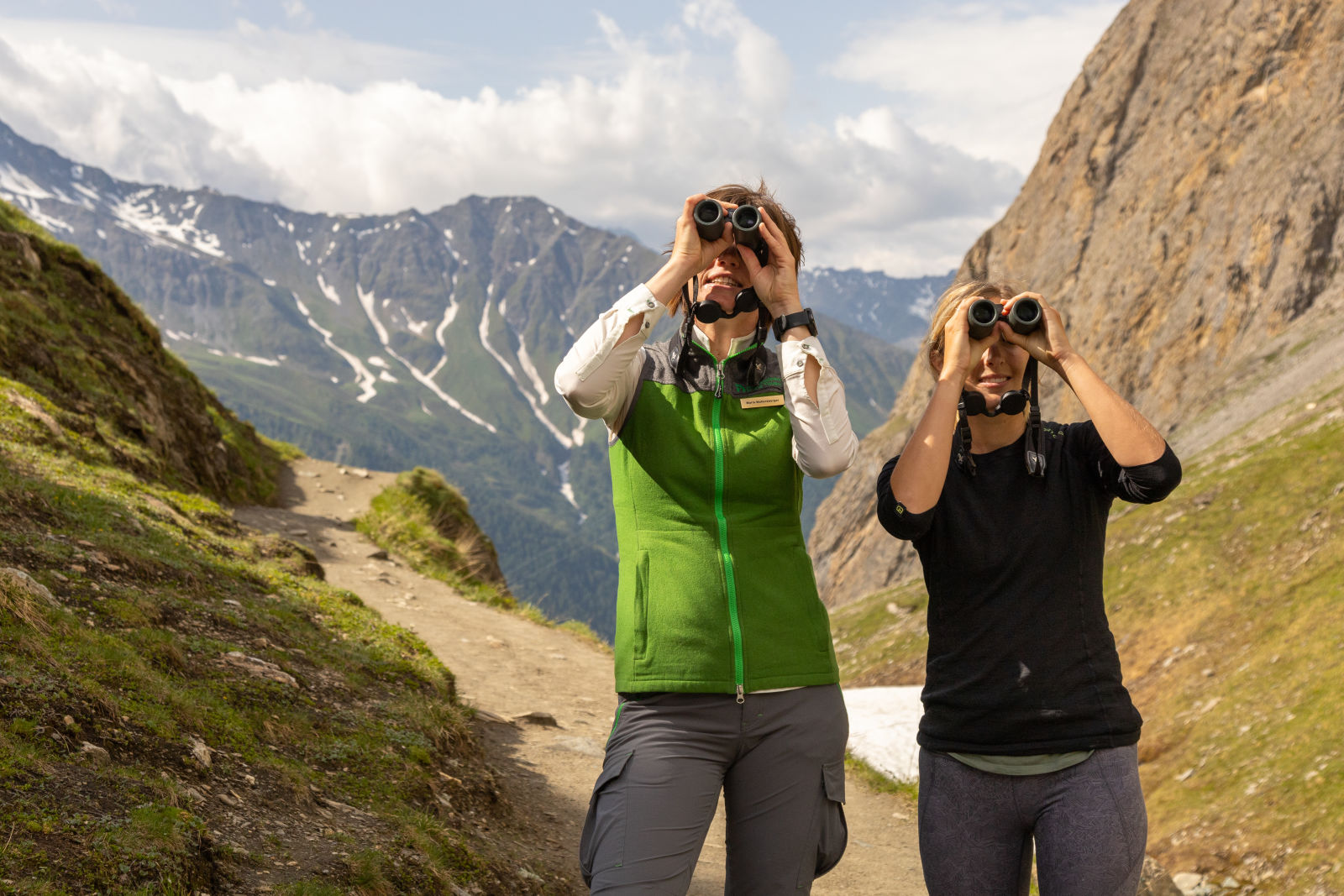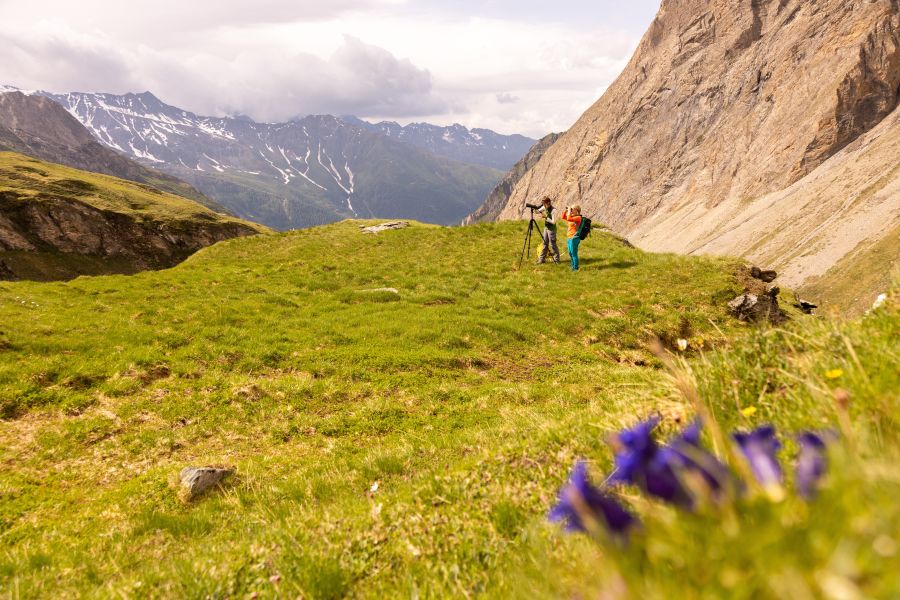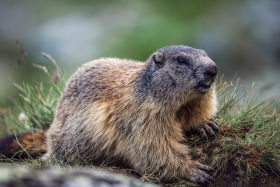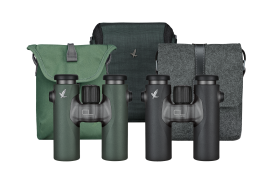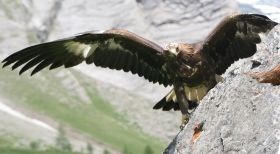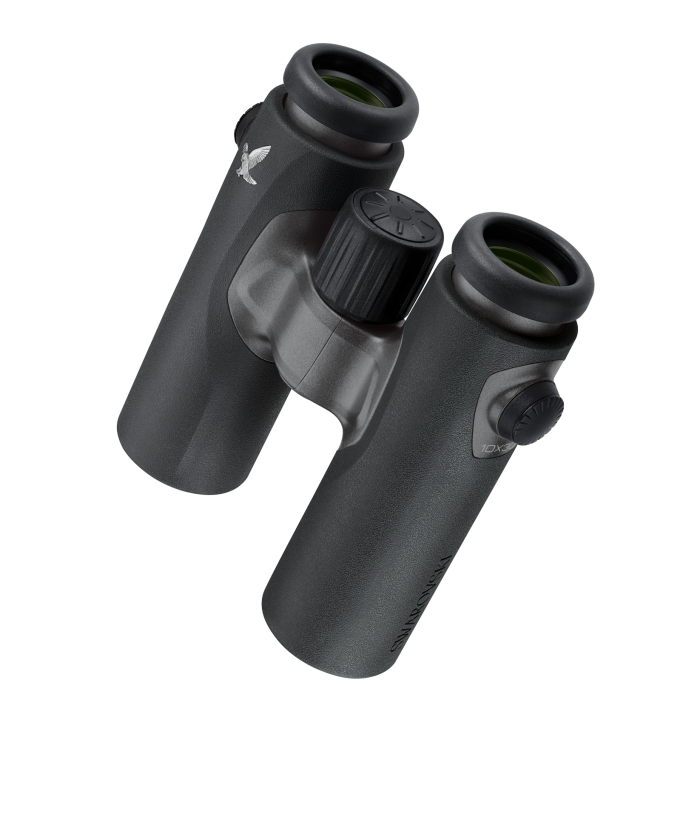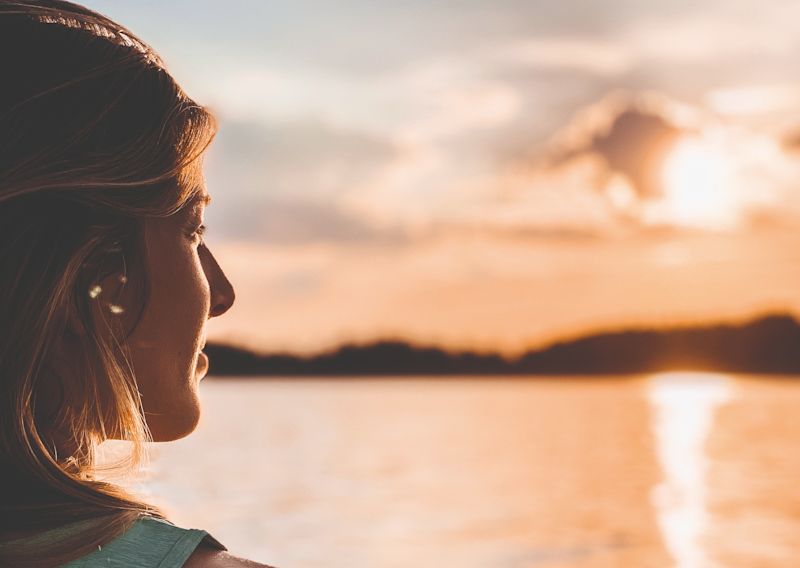With binoculars around our necks, camera in hand, we make our way as quietly as possible, step by step, along the narrow path. We hold our breath at every rustle in the grass and every rumble from the cliffs and our hearts beat faster. I glance ahead to the ranger, my hand reaching for my binoculars.
The next moment, I’m kneeling on the grass in a sea of yellow and blue flowers, holding my breath, binoculars pressed to my eyes. Crouched down beside me in the grass, just as still and tense, is ranger Maria.

Senses heightened, alert for the tiniest sound or movement. Advancing slowly, with painstaking care. A walking safari is a unique experience. Spotting wild animals is the absolute highlight – but it’s worth it for the enjoyment of the search alone. The feeling of discovering tracks and picking up the trail. The excitement of every noise, the thrill of sights captured through the binoculars.
It doesn’t need to be Africa
The most popular destinations, and probably the first to immediately spring to mind at the word “safari,” are the countries of Africa, and the national parks that are home to the Big 5. Spotting these Big 5 – elephant, rhinoceros, buffalo, lion, and leopard – is a lifelong dream for many people.
But Africa’s national parks are not the only places where you can track the Big 5. You don’t even need to leave Europe to feel that adrenaline rush as you look through the binoculars. The Alpine region is well worth a trip too, with destinations such as the Hohe Tauern National Park which you could call the office of ranger Maria.
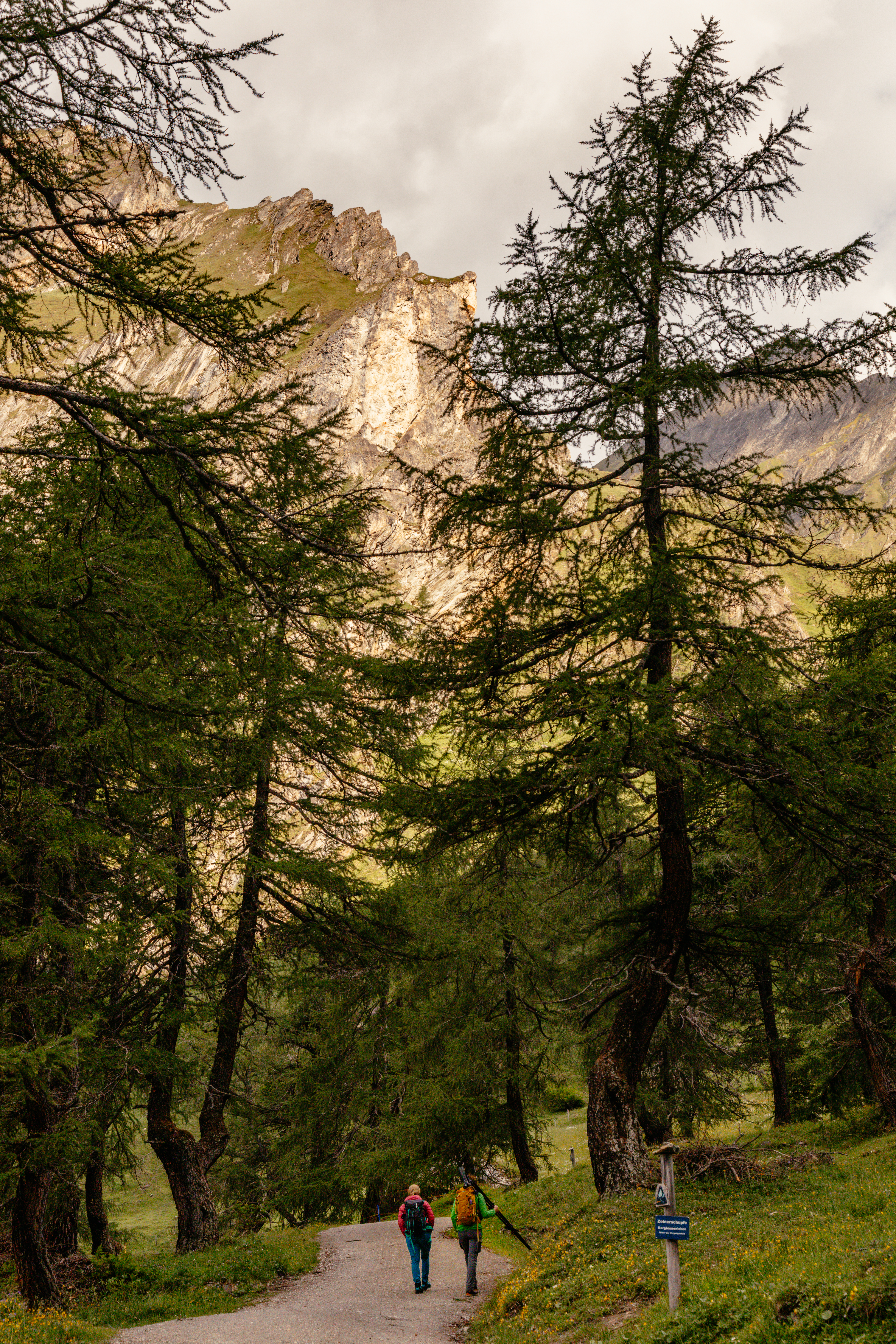
Out and about with
alpine rangers
The Hohe Tauern National Park around Austria’s highest mountain, the Grossglockner, is the largest connected nature reserve in Austria, covering 1,800 square kilometers (700 square miles). The valleys at the foot of the Grossglockner are regarded as top spots to find all of the Big 5 of the Alps on a safari.
These are the animals that visitors to the Alps are generally most eager to spot. The feeling of picking up their trail, binoculars around your neck, camera in hand, is very close to the experience in the African bush. And here too, a little luck is part of any safari, ideally backed up by expert knowledge from the rangers.
National Park rangers know the territory inside out. Perhaps even better than the back of their hand. They are familiar with the most popular trails used by wild alpine animals and they know the most frequented routes and regular feeding grounds.
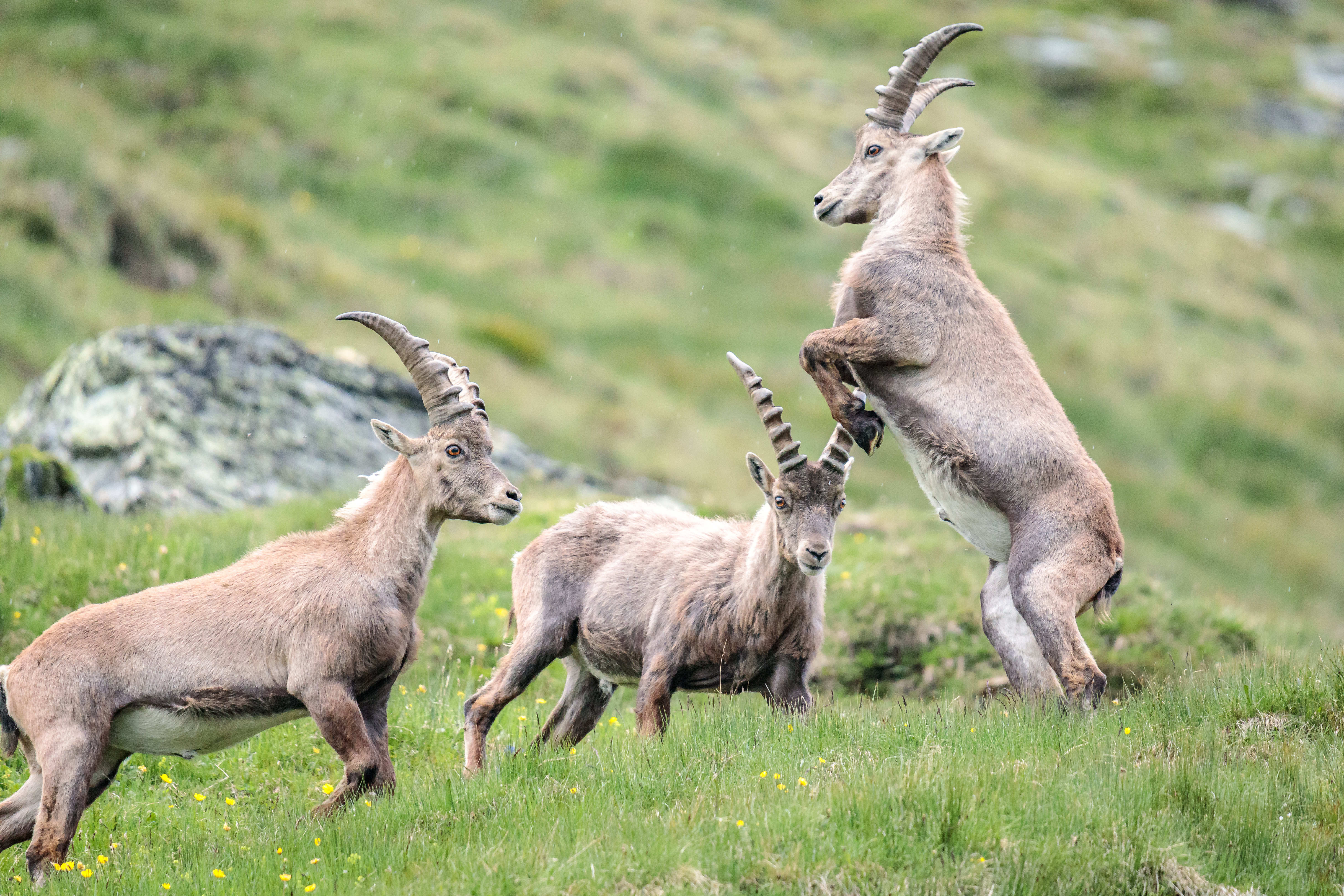
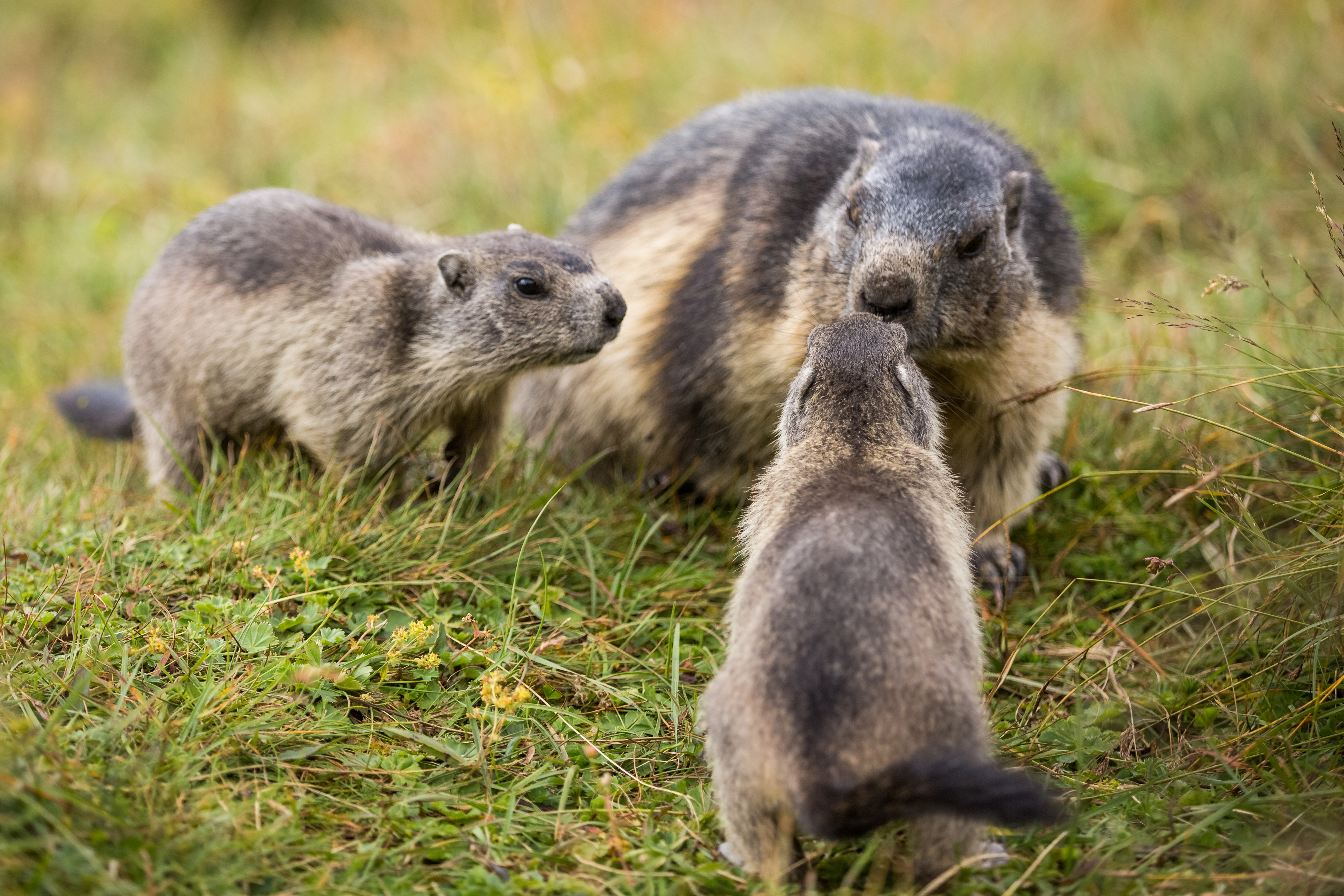

The safari starts directly in the parking lot
It doesn’t take Maria long, not even a kilometer, to spot the first animals: the car trunk is still open and the spotting scope not even unpacked when she hands me the little binoculars in the parking lot. I start frantically looking right and left, quickly turning the zoom wheel for a clear view. I need to be fast, I think to myself. This might be my first and only chance to catch sight of a wild animal.
Maria, on the other hand, is relaxed.
“No rush,” she says. And decides there’s enough time to take the large tripod out of its cover and screw on the spotting scope. With no sense of urgency whatsoever.
The chamois she has just spotted on the steep slope directly above us will graze there for long enough. She knows this too. Not just because this isn’t the first time a safari has started directly in the parking lot, before she has even had a chance to introduce herself properly.
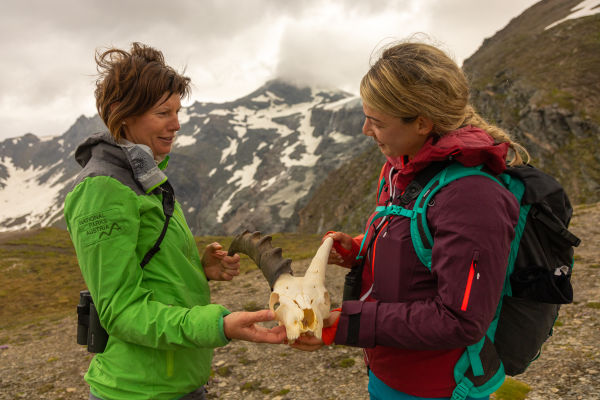
It is the feeling
that Maria conveys.
Maria continuously surprises me on this alpine safari. Not just with her knowledge and vision, but with the feeling she conveys. The sense of stillness as we observe and marvel. And in this respect, Maria is no different to the rangers I’ve been out with in Africa. And: in Africa as in Austria, some situations are anything but textbook. For example, a giraffe couple very untypically living monogamously. Or a chamois that has infiltrated an ibex herd.
There is also a sight that makes even Maria smile: a lone chamois who obviously think it’s an ibex and has quite naturally integrated the herd, looking every bit at home. The ibex, on the other hand, are less enthusiastic and are looking at the interloper skeptically. They keep trying to shake it off – but are realizing that the chamois is probably there to stay.
We watch the show for some time. Until the animals climb up with the sun to higher locations.
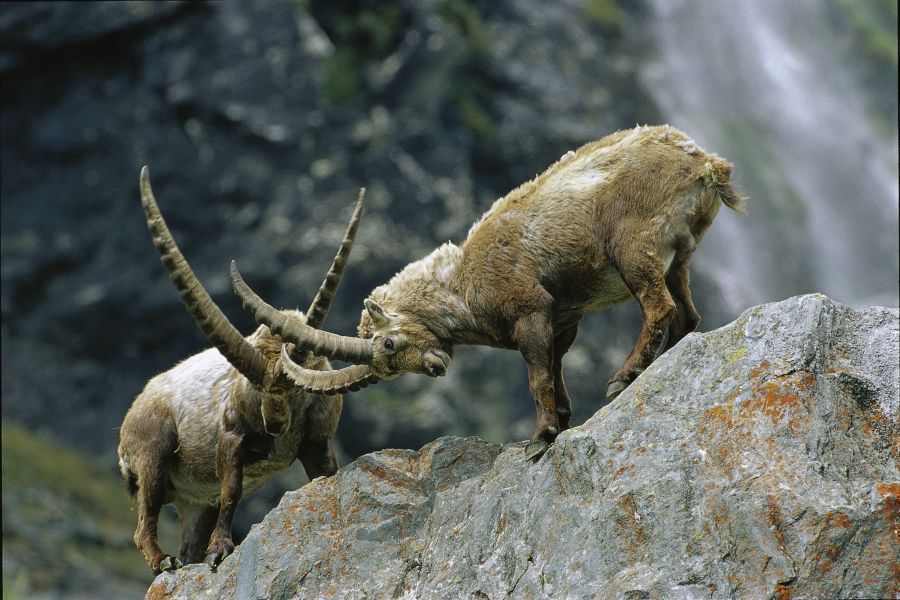

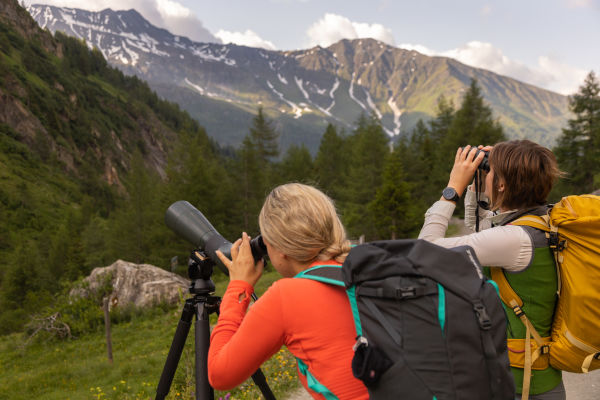
The morning magic of the safari fades – it feels almost as if this window into the wilderness is about to close again. More walkers slowly make their way toward us. Some of them casting curious glances at the large spotting scope Maria is still carrying on her shoulders.
Rangers are rangers. Whether in Africa or Austria.
Austria
Visitors can experience the magic of the Big 5 in several regions between the Western and Eastern Alps. The Hohe Tauern National Park is just one of the destinations offering ranger tours. You can follow the trail of wild animals in other regions too, binoculars around your neck.
Austria
If you’re hoping to spot ibex, for example, your best chance is in the Kaunergrat Nature Park. Since the resettlement in 1953, the ibex population has grown rapidly. The nature park is now home to the biggest ibex colony in Austria, with 1,200 animals.
Austria
The Lechtal is an important destination for birders. 110 of the 150 species of native Tyrolean breeding birds can be found in the Tiroler Lech Nature Park. Hence its status as an internationally recognized “Important Bird Area”.
Switzerland
In Switzerland, the mountains in the canton of Grisons offer the best prospects of discovering the Big 5.
Germany
And if you want to try your luck in Germany, take a trip to the Allgäu: the Zentrum Naturerlebnis Alpin in Obermaiselstein offers guided tours of the Big 5 in the Allgäu region.
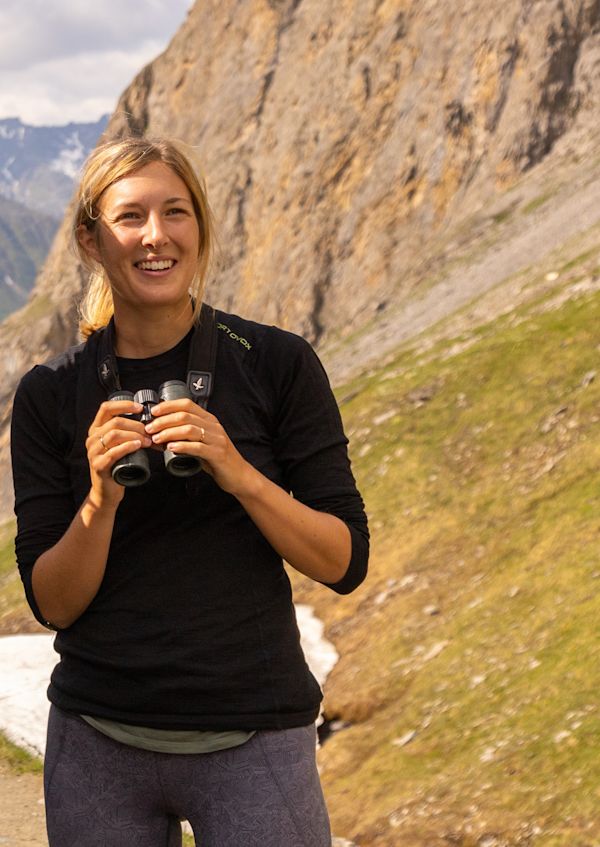
About
Franziska Consolati
Franziska Consolati (née Bär) is an author and adventurer. She had barely reached adulthood when she embarked on one of her first trips with Bedouins through the Sahara. Somewhere between the desert dunes, she lost her heart to our planet. Since then, she has traveled over half the world, immersed herself in foreign cultures, and explored wild nature beyond beaten paths. Each step has heightened her realization of the urgent need to take action to protect our Earth. Franziska worked for an environmental organization for four years before becoming a freelance author focusing on both travel and environmental protection.
With thanks for the photos:
Hohe Tauern National Park: Hannah Assil, Michael Kastl, Alexander Müller, Emanuel Egger, Günther Gressmann, Norbert Hölzl
Franziska Consolati

